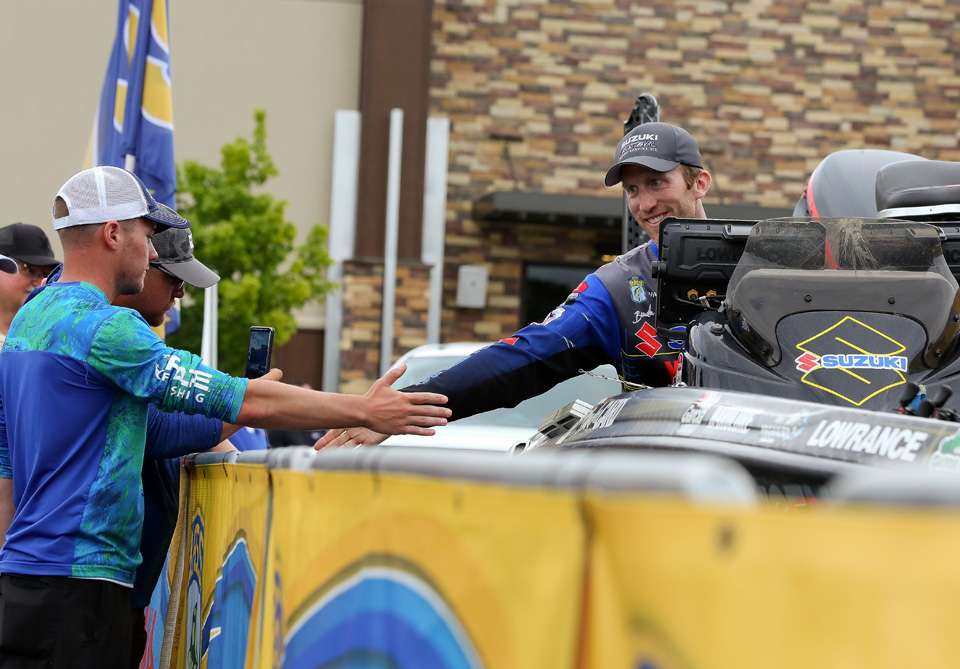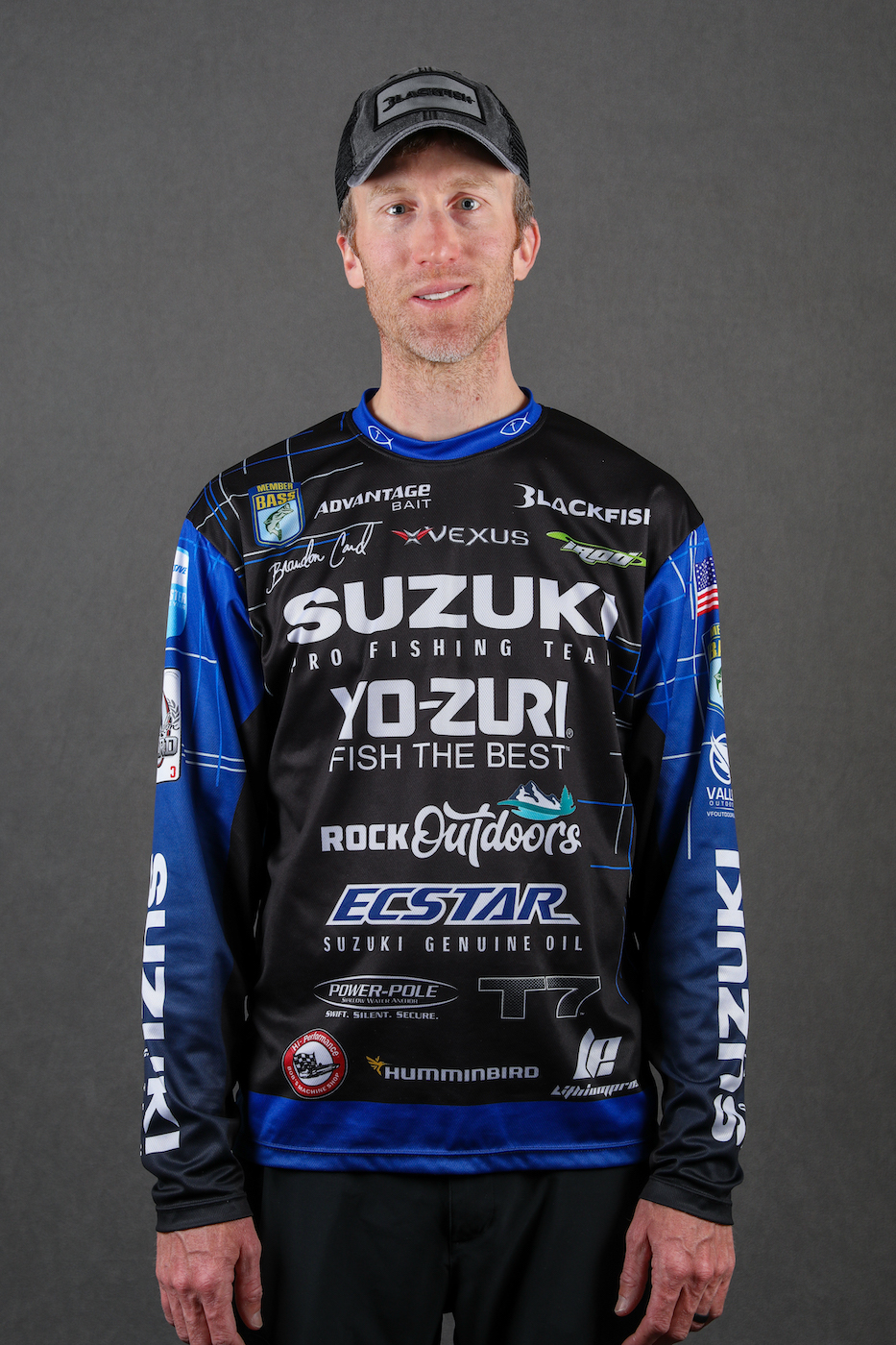
In my last column I evaluated the positive and negative things of 2019. I broke down the first five Bassmaster Elite Series tournaments, and in this column I will evaluate my final Elite events of 2019.
I’m doing this to figure out what I did right and wrong in hopes of avoiding missteps in future tournaments. Perhaps you can learn from my experiences.
Lake Guntersville, Alabama
When the schedule came out, I figured the Guntersville tournament would surely be one of my best. I love ledge fishing on TVA lakes, and Guntersville has some of the best ledge fishing on that chain.
In practice, I was all-in on finding ledge fish. I wasn’t doing well, but I just kept thinking I’d find them the next hour or the next day if I stayed with it.
I did take an hour off here and there to experiment with shallow patterns, but I didn’t give them enough time to develop. By stubbornly fishing offshore, I landed in 64th place with a measly two-day weight of 24-9.
The event was won by shallow fishing in the grass. I guess most of the deep fish left the ledges and moved back up to the shallow grass.
RIGHT: I executed on the bites that I did have on the offshore ledges.
WRONG: When I couldn’t find them grouped up well offshore on the first day of practice, I should have invested much more time looking for shallow patterns.
St. Lawrence River, New York
I’ve targeted largemouth bass in previous Elite Series events on the St. Lawrence River with good and bad results. Since my mindset this season was to be more versatile, I decided to forgo the largemouth in favor of smallmouth in deep water.
In practice I fished from 15 to 45 feet deep with drop-shot rigs and the Ned rig. I didn’t do much on the first practice day, but I caught some big ones the next. I’d catch a 5 1/2-pounder here, a 5-pounder there, a 4 1/2-pounder somewhere else and so on. I caught a really big bag, but for the most part, I was only catching one big one per area. I never found an area where they were stacked up, which is what I was looking for.
I didn’t find much by fishing deep on the third practice day. However, the heavyweights I caught on the second practice day gave me a ton of confidence that I was on the right track. I wasn’t.
My limits on the first two days of the tournament weighed a paltry 34-1, which was only good enough for 50th place.
RIGHT: I was willing to try something different to elevate my smallmouth game on the St. Lawrence.
WRONG: I let those big smallmouth in deep water lead me astray. Although the tournament was won in deep water, many of the top 10 fished shallow. I should have invested a good portion of my practice time looking for shallow bass.
Cayuga Lake, New York
The week after the St. Lawrence tournament we went to Cayuga Lake for our eighth event of the year. I was determined to find deep and shallow fish and not make the same stubborn mistakes I made at Guntersville and St. Lawrence. I started out practicing deep with crankbaits and a drop shot and started catching really big ones. Although I liked what I had found, I spent the second day fishing shallow docks and other shallow patterns because I didn’t want to get locked in on one depth zone. The bass weren’t running as big in the shallows, but I caught enough decent ones to establish a backup plan.
On the first tournament morning I ran straight to my best deep spot and caught a good limit right out of the gate. Then I ran to my other deep spots, which turned up nothing for some strange reason. I went back to my first spot late in the day and culled up to a limit that weighed over 18 pounds.
The next morning I went straight back to my best spot. I shut off my Suzuki and didn’t start it again until it was time to run to the weigh-in. I caught bass all day, brought in more than 20 pounds and was in the Top 10.
I went back to my honey hole on the third day. Unfortunately, clouds moved in and that spot needed sun to pull the bass away from the grass and to the rocks I was fishing. I ground out 14 pounds and dropped to 17th place with a three-day total of 53-2.
RIGHT: I found big largemouth offshore and also found shallow bass for a backup.
WRONG: I can’t say I did anything wrong by staying on my best area the third day. It would have taken only a few kickers to make the cut for day four. Also, my shallow bass patterns worked better in the sun, which I did not have on Day 3.
Lake Tenkiller, Oklahoma
The next Elite tournament was originally slated for Fort Gibson. It was moved to Tenkiller due to high water. I liked the idea of going to Tenkiller because few pros had fished it. We were all pretty much starting from scratch.
On the first practice morning I caught a good one right off flipping flooded bushes, which is something I love to do. I avoided the temptation to flip all day because the water was dropping. I calculated that the bushes would be high and dry once the tournament started. Fishing them in practice would have been a major waste of time.
Instead, I looked for isolated wood cover in slightly deeper water out from the bushes. I caught a 4-pounder on the first one I fished. After getting a few more bites on isolated wood, I spent most of the rest of the day driving around and marking similar cover. I found more isolated wood and shook off a big bass on a stretch of riverbank.
The second practice day I found a backup pattern, which was drop-shot fishing for spotted bass that were relating to deep brush piles. I went shallow again the third day and found several more areas.
I caught them pretty good the first two days and was siting in second place going into Day 3. I caught them by fishing isolated wood with a vibrating jig and flipping baits.
That pattern began to fade on Day 3. I went to the stretch of riverbank where I’d had the big bite in practice, and it bailed me out. It also bailed me out on day four. I fished fourth with 47-3.
RIGHT: I didn’t waste time practice fishing flooded bushes, which were dry by the time the tournament started. I looked for isolated cover in deeper water that the bass would move to as the water dropped. I found backup fish. The riverbank paid off. I didn’t need the smaller spotted bass.
WRONG: I may have spent too much time fishing a few isolated logs where I was catching one short bass after another. I kept thinking a keeper would eventually show up. That never happened.
Lake St. Clair, Michigan
Lake St. Clair is my least favorite place to fish on planet earth. Although it’s a phenomenal lake, I just don’t have confidence fishing a lake that for the most part is featureless. I like to rely on my Navionics mapping and Lowrance side scan to find definitive structure where I can catch bass, and you just can’t do that on St. Clair. Finding the big smallmouth that live there is a random experience, and it drives me crazy to randomly fish.
To my pleasant surprise, I caught them pretty good on the first day of the tournament by fishing a community hole with several other competitors. The bass in that area started to dissipate on the second day. By Day 3 they had pretty much vanished. I really didn’t have anything else to go to, and I caught only two bass on Day 3 which dropped me all the way to 45th place with 39-9.
RIGHT: I maximized that one area on Day 1 and caught a decent bag.
WRONG: I fished the main lake where I have no confidence because the bottom is a featureless bowl. The next time I fish St. Clair I will concentrate on the St. Clair and Detroit rivers. Those rivers at least have points, humps and other structure that hold smallies. That will give me something specific to target when fishing, and I will avoid getting sucked in to the randomness of fishing Lake St. Clair.

